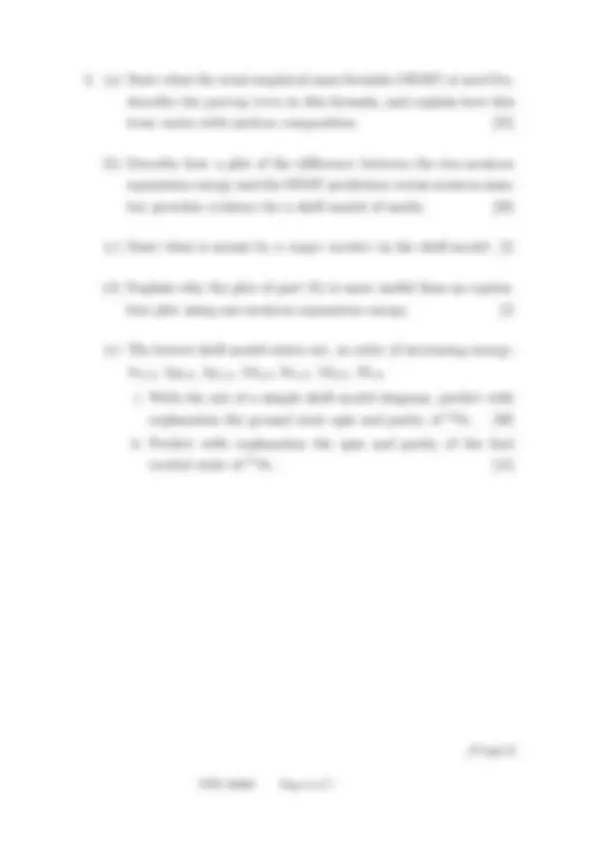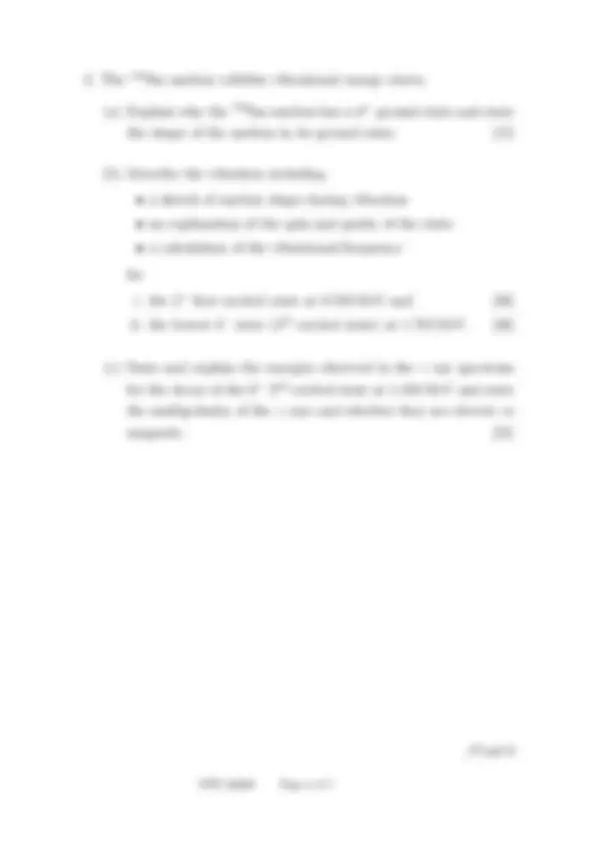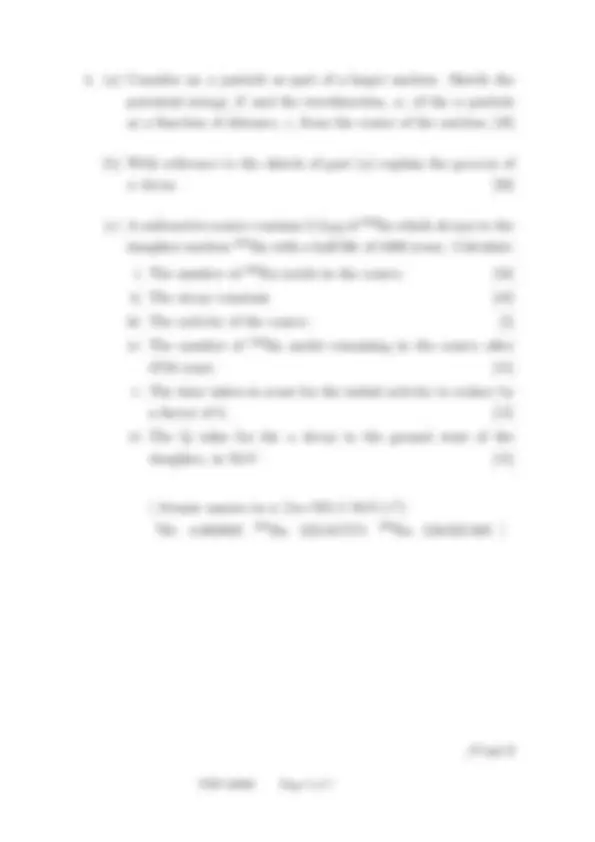





Study with the several resources on Docsity

Earn points by helping other students or get them with a premium plan


Prepare for your exams
Study with the several resources on Docsity

Earn points to download
Earn points by helping other students or get them with a premium plan
Community
Ask the community for help and clear up your study doubts
Discover the best universities in your country according to Docsity users
Free resources
Download our free guides on studying techniques, anxiety management strategies, and thesis advice from Docsity tutors
A handout for an exam in nuclear and particle physics at keele university, held in may 2011. It includes four questions covering topics such as quark structures of particles, semi-empirical mass formula, vibrational energy states in nuclei, and alpha decay. Candidates are required to answer four questions within the given time frame.
Typology: Exams
Uploaded on 09/29/2011
1 / 7

This page cannot be seen from the preview
Don't miss anything!




Level II
Wednesday 25th^ May 2011, 16.00-18.
PHYSICS
PHY-
NUCLEAR AND PARTICLE PHYSICS
Candidates should attempt to answer FOUR questions.
(b) Discuss how the masses of the baryons of part (a) compare with each other and with the mass of a proton. [20]
(c) Explain, with reference to the particles of part (a)iii and (a)v, how the intrinsic properties of a particle and its antiparticle compare. [10]
(d) The Σ−^ (dds) decays to the Λo^ (dus) as follows:
Σ−^ → Λo^ + e−+? i. Identify the particle indicated by the ”?” in this decay. [5] ii. Draw a Feynman diagram for the decay and show how charge number, baryon number, lepton number and strangeness are conserved at each vertex. [40]
/Cont’d
(a) Explain why the 142 Sm nucleus has a 0+^ ground state and state the shape of the nucleus in its ground state. [15]
(b) Describe the vibration including
(c) State and explain the energies observed in the γ ray spectrum for the decay of the 0+^2 nd^ excited state at 1.450 MeV and state the multipolarity of the γ rays and whether they are electric or magnetic. [25]
/Cont’d
(b) With reference to the sketch of part (a) explain the process of α decay. [20]
(c) A radioactive source contains 2.3 μg of 226 Ra which decays to the daughter nucleus 222 Rn with a half life of 1600 years. Calculate: i. The number of 226 Ra nuclei in the source. [10] ii. The decay constant. [10] iii. The activity of the source. [5] iv. The number of 226 Ra nuclei remaining in the source after 3750 years. [15] v. The time taken in years for the initial activity to reduce by a factor of 6. [15] vi. The Q value for the α decay to the ground state of the daughter, in MeV. [15]
[ Atomic masses in u (1u=931.5 MeV/c^2 ): (^4) He 4.002603 222 Rn 222.017571 226 Ra 226.025403 ]
/Cont’d
Give a detailed explanation of these reactions, including in your answer a description of why it is these particular reactions that occur and how rapid the reactions are. [50]
(b) The neutrino flux from the Sun, at the Earth a distance 1.5× 1011 m away, is 6.6× 1014 m−^2 s−^1. Calculate the power generated by the sun. [35]
[ Atomic masses in u: (^1) H 1.007825 4 He 4.002603 ]
(c) State how a second generation star differs from the first genera- tion star of part (a) and name the series of reactions this allows (it is not necessary to list these reactions). [15]